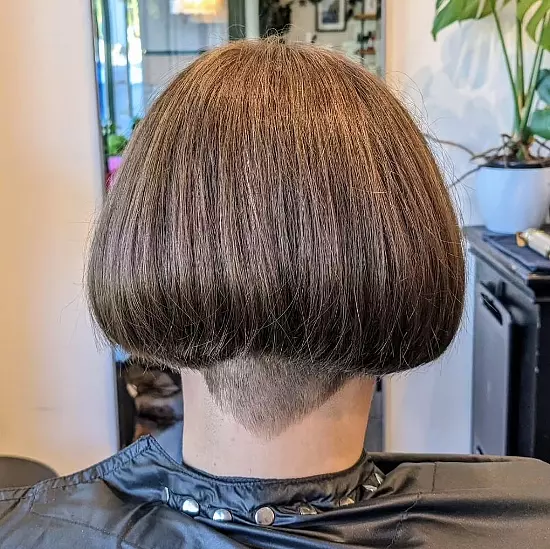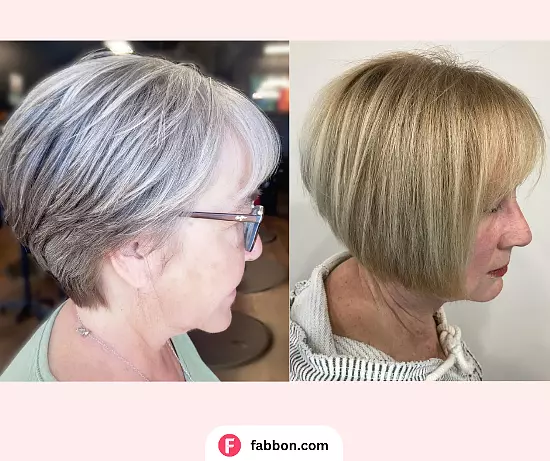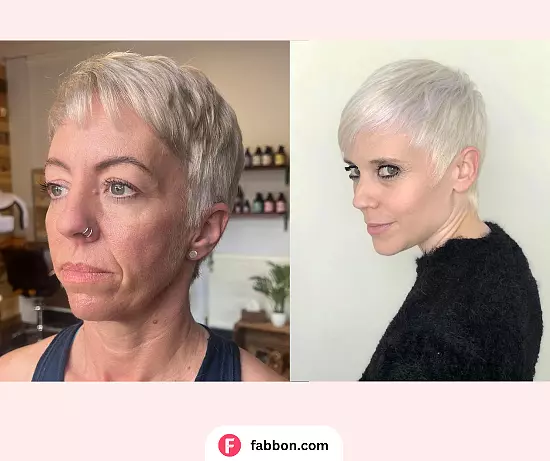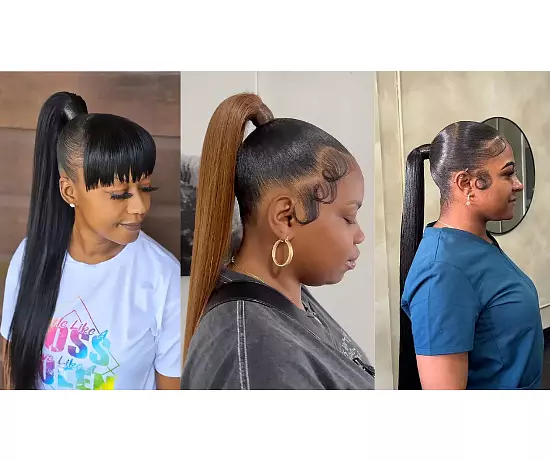Fue Hair Transplant: Everything You Need To Know
Sheena Shah
Updated At 16 Dec 23
If you have spotted shocking celebrity hair transformations on social media, you must have heard about the FUE hair transplant. Follicular Unit Extraction, or FUE, has taken the spotlight as a modern surgical method to treat hair loss and achieve natural-looking results.
FUE procedure has become a popular choice for people seeking to reclaim not only their lost hair but also their confidence. With its effectiveness and minimal scarring, it has caught the attention of everyone, including celebs like Robbie Williams and Louis Walsh.
Let us know more about this hair transplantation technique and how it has become a powerful solution for hair loss.
Understanding FUE Hair Transplant
The International Society of Hair Restoration Surgery reported a surge in hair transplant procedures worldwide, with a striking 157% increase from 2008 to 2019. The statistics reflect a growing interest in hair restoration solutions globally.
FUE hair transplant is one of the popular procedures to address hair loss concerns. This extensive guide on FUE hair transplant surgery will explore how FUE works, its cost, results, potential side effects, and more.
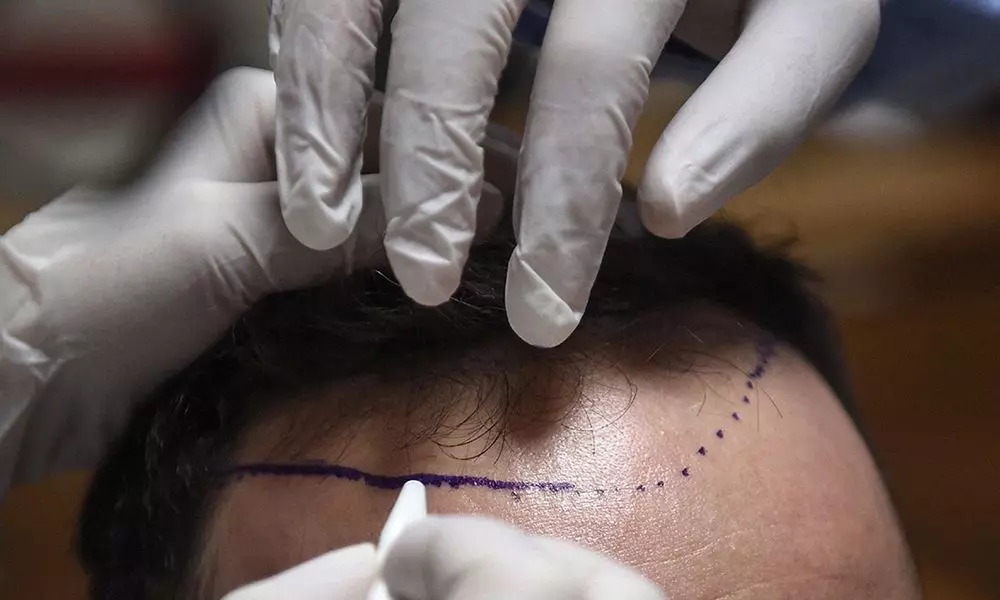
How does a FUE hair transplant work?
FUE, or Follicular Unit Extraction, is a modern technique for hair transplant surgery. It involves taking individual hair follicles from one region and planting them in another. The process is designed to make the hair in the new area, where the hair was thinning or balding has started, look thicker and more natural.

Before FUE became popular, there was another hair transplantation method known as Follicular Unit Transplantation (FUT). Unlike FUE, FUT involves taking a piece of skin with hair follicles and moving it to the target area. FUT leaves a scar, and that's one of the major reasons why people favor FUE, where minimal scarring is involved.
Dr. Roshan Vara, a hair transplant surgeon and director at The Treatment Rooms London, considers both FUE and FUT viable methods to treat hair loss. He suggests that patients weigh the pros and cons before making an informed decision. He explains,
"Both FUE and FUT hair transplant surgeries are viable methods of surgery for patients who want to restore their hair. We counsel patients around both methods and their pros and cons if it is important to them making an informed decision around their surgery."
Looking to find out all the details about FUT hair transplant, then do check out our guide. We explain in detail FUT process, pros and cons, its side effects and costs.

FUE focuses on extracting and transplanting individual follicles. This change was made to avoid the "hair plug" appearance and large scars associated with FUT.
Here's a simplified breakdown of how FUE works:
1. Extraction of Follicular Units: Individual hair follicles are carefully taken from an area with healthy hair, often the back of the scalp by the hair surgeon.
2. Harvesting of Grafts: The extracted individual hair follicles are called grafts. These grafts are carefully harvested and prepared for transplantation.
3. Implantation of Grafts: These harvested grafts are then skillfully implanted into the area where more hair thickness is desired, such as a thinning or balding area.
The transplanted hair grows naturally in its new location, creating a fuller and more natural-looking appearance. FUE is the best option for someone with thinning or balding hair who still has sufficient healthy hair nearby for transplantation. However, people with limited healthy hair may not be eligible for this procedure.
Cost of a FUE hair transplant
The cost of a Follicular Unit Extraction (FUE) hair transplant in the USA is variable depending on each patient's unique needs. These include the specific target region, the chosen treatment approach, the patient's facial structure, age, etc. Other factors, such as the clinic you choose, the surgeon's expertise, and the extent of the procedure, can also influence the total cost of FUE hair transplantation.
The primary driver of cost for FUE hair transplant is the number of grafts required to cover the bald or thinning area. FUE grafts typically range from $6 to $12 per graft, while FUT grafts are generally more economical, falling within the $3 to $6 per graft range.
Overall Cost Estimate:
The total cost of a FUE hair transplant procedure can vary widely, ranging from:
Low End: $12,000 for a smaller procedure or targeting minor bald patches.
High End: $30,000 or more for extensive procedures involving a higher number of grafts or complex cases.
A consultation with a qualified hair transplant specialist is necessary for getting an accurate cost estimate of the FUE hair transplant tailored to your specific needs.
FUE Hair Transplant Before and After Results
FUE hair transplant surgery is not just a medical procedure, but also a journey of people with renewed confidence. Many individuals, including celebrities like Robbie Williams and Louis Walsh, have faced low self-esteem and body image issues due to hair loss and receding hairlines.

Louis Walsh, former X-Factor judge, was happy with his FUE hair transplant at Hair Restoration Blackrock (HRBR) and explained,
"It’s called maintenance. It’s not a wig or a syrup of figs or an Irish jig. It’s just me, with my own hair, feeling better. I saw what it had done for other people. I saw James Nesbitt before and after and I thought, ‘Hey, he looks better.’ He actually looked good… for him.”

The essence of the hair transformation can be seen in the remarkable before and after photos. They show the real impact of FUE on individuals dealing with hair loss. The early FUE transplant starts showing within the first few months. Hair density improves within the six to twelve-month mark.
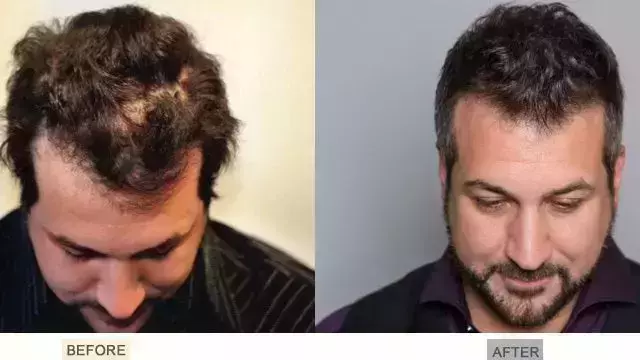
The full hair transformation post-procedure can be seen after a year or more. Patients witness a natural-looking head of hair that restores their appearance and boosts their overall sense of self. Ben Stokes, a famous English Cricketer, got a FUE hair transplant surgery at Wimpole Clinic and emphasized the effect of hair loss on mental health. He shared,
"It’s just amazing how much confidence I got after having [my procedure] and seeing the results. I wasn’t worried about it any more.”

FUE Hair Transplant Scar: Is it visible?
The FUE method is designed to minimize scarring. It is a good option for those concerned about visible marks on the scalp. After the FUE procedure, you can see tiny, dot-like scars scattered across the donor area. These scars are less noticeable compared to the linear scar seen in FUT.
The small size and scattered placement of FUE scars make them less visible. The dots are often covered by surrounding hair, making them difficult to detect. One of the major perks of a FUE hair transplant is that you can keep your hair short, as the dot-like scars are hardly noticeable.
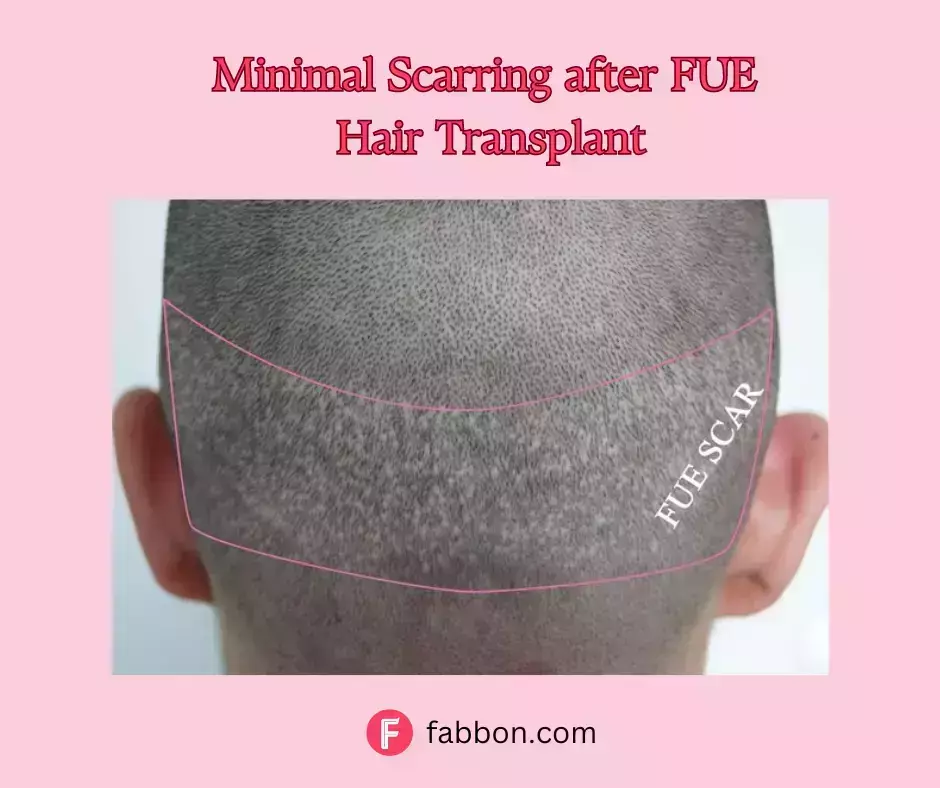
As the surrounding hair grows and covers the donor area, the FUE scars become increasingly hidden. The visibility of FUE scars can vary from person to person based on factors such as skin type, hair color, and the individual's healing process. However, in the majority of cases, FUE scars do not attract attention.
Side Effects of FUE Hair Transplant
Like any medical procedure, FUE surgery comes with certain side effects. These effects are generally temporary. Sometimes, they are a part of the body's natural response to the surgical process. Here, we have listed the common side effects of FUE hair transplant and how they can be managed:

1. Swelling
- Swelling after a hair transplant is common in the forehead and lasts 2-6 days.
- Anti-inflammatory medications can reduce swelling.
2. Bleeding
- Oozing and scabbing are normal in the donor area after the hair transplant.
- Bleeding in the recipient area should stop by the day after.
- Apply gentle pressure if bleeding persists; consult the surgeon.
3. Hair Loss After Hair Transplant
- Temporary shedding is known as 'shock loss.'
- New hair growth follows after the shedding phase.
4. Itching After Hair Transplant
- Itching is a common reaction due to inflammation. Avoid scratching to protect new follicles.
- Use saltwater spray, antihistamines, and medicated shampoos for relief.
5. Crusting
- Scabs may form due to dried blood and fluid. Crusts usually disappear within 1-2 weeks post-procedure.
- Avoid picking and follow postoperative care for washing.
6. Infections After Hair Transplants
- Infection from bacterial settlement in small cuts can happen after a FUE hair transplant.
- Antibiotic treatment is effective, and early intervention prevents risks to grafts.
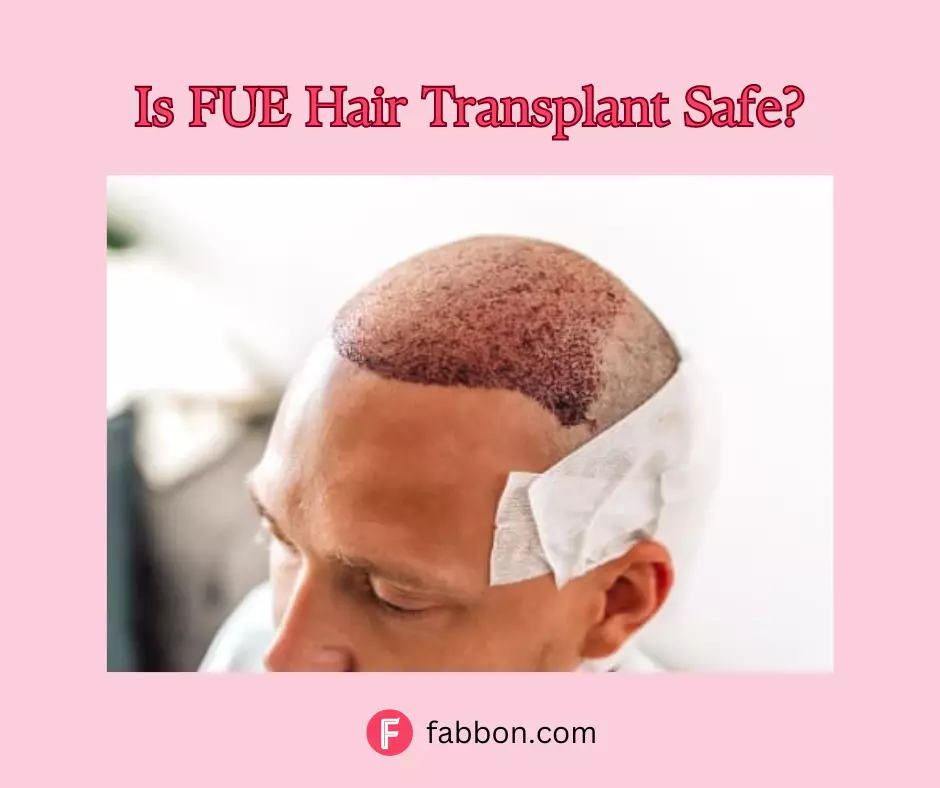
Is FUE Hair Transplant Safe?
The FUE method is considered a safe and effective procedure for hair loss. FUE is known for its minimally invasive nature, thus reducing the likelihood of complications. The safety of FUE is further emphasized by factors such as minimal scarring, shorter recovery period, and its suitability for various hair loss types.
The procedure is typically performed under local anesthesia, ensuring patient comfort during the surgery. Additionally, FUE's quicker recovery time contributes to overall safety, allowing individuals to resume their normal activities sooner than with other hair transplant methods.
Despite its safety profile, individuals considering an FUE hair transplant should consult a qualified surgeon to address any concerns.
FAQs on FUE Hair Transplant:
Q. Is FUE Hair Transplant permanent?
Yes, FUE hair transplant is considered long-lasting and provides permanent results.
Q. Does FUE hurt?
FUE is generally a minimally invasive procedure performed under local anesthesia and intravenous sedation. While some discomfort may be experienced, it is manageable with prescribed pain medication.
Q. When will you see the results of FUE?
Initial results may be visible within a few months. Major improvements are typically noticed between 6 to 12 months post-surgery. Full results can be witnessed after a year.
Q. Can women undergo FUE hair transplant?
Yes, FUE is a suitable option for women experiencing hair loss. The eligibility depends on certain factors, and consultation with a qualified surgeon is essential.
Q. How can you minimize the risk of complications after FUE?
Following postoperative care instructions, maintaining proper hygiene, avoiding strenuous activities, and taking prescribed medications can help minimize the risk of complications.
Q. Can you wear your hair short after a FUE transplant?
Yes, FUE leaves minimal scarring, making it suitable for those who prefer short hairstyles.
Q. Is FUE better than FUT hair transplant?
The choice between FUE and FUT depends on individual preferences and circumstances. FUE is often preferred for its minimal scarring and faster recovery, while FUT may be more cost-effective for some with shorter operative periods. Consulting with a surgeon helps make an informed decision based on specific needs.



